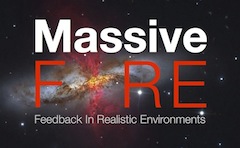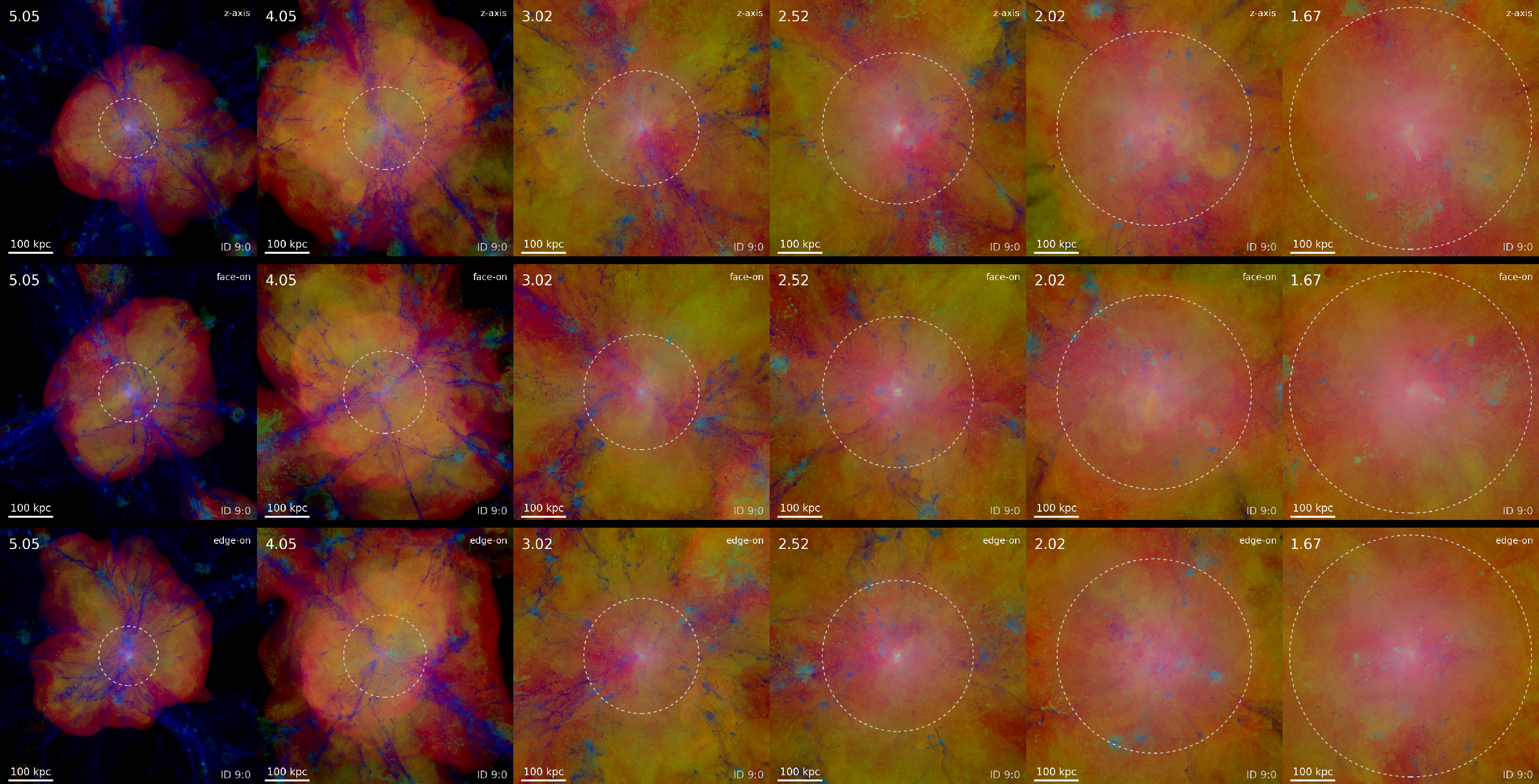Robert Feldmann
Associate Professor | Department of Astrophysics, UZH
 |
The peak epoch of star formation in the Universe, about 9-12 billion years ago, marked a time of vigorous stellar mass growth for most galaxies. The high star formation activity was likely fueled by the accretion of relatively cool gas from either the cosmic web or from the large reservoir of neutral gas that surrounds most of these galaxies. However, a sizable fraction of massive galaxies at such early times formed stars at a significantly reduced rate. These observations pose a number of questions that have yet to be answered, and include the following: |
- Which physical processes are responsible for the quenching of star formation in massive galaxies?
- What is the structure and composition of the halo gas surrounding massive galaxies?
- What are the physical conditions of sub-millimeter bright galaxies and why are they so luminous?
- How are star formation, stellar feedback, gas inflows, and outflows interconnected?

False-color image showing the evolution of gas properties of one of the targeted galaxies from the MassiveFIRE sample. Gas density (blue), temperature (red), and metallicity (green) are encoded as RGB color channels using a logarithmic scale. Cosmic time increases from left (z=5, ~1 billion yr) to right (z=1.7, ~4 billion yr). Different rows show different projections. The circle indicates the size of the virial radius of the dark matter halo hosting the targeted massive galaxy. Galaxies grow at early time via accretion of cool and metal-poor gas along filaments. At later times mergers and cooling of hot gas drive the inflow of gas.
Refereed publications that use MassiveFIRE simulations
- Feldmann et al. MNRAS, 458, L14 (2016)
- Faucher-Giguère et al. MNRAS, 461, L32 (2016)
- Geach et al. ApJ, 832, 37 (2016)
- Sravan et al. MNRAS, 463, 120 (2016)
- van de Voort et al. MNRAS, 463, 4533 (2016)
- Oklopčić et al. MNRAS, 465, 952 (2017)
- Sparre et al. MNRAS, 466, 88 (2017)
- Ma et al. MNRAS, 466, 4780 (2017)
- Feldmann et al. MNRAS in press (2017)
- Hafen et al. MNRAS in press (2017) (last updated May 2017)
Selected Research Highlights
- Galaxy colors depend on halo growth rates
- On the nature of two processes that shape the star formation histories of galaxies
Movies & Images
see the Gallery
Please e-mail me if you are interested in collaborating on a MassiveFIRE related project.